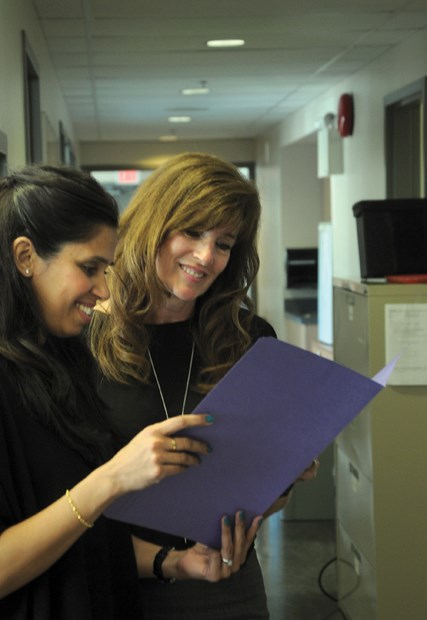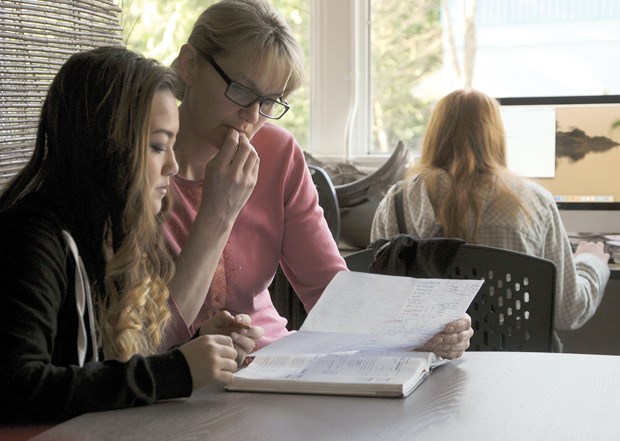Imagine for a moment that you are startled awake in the middle of the night.
Sitting up quickly in bed, you scan the room for any sign of what woke you but the dark is hard to penetrate. The silence is deafening. Suddenly you hear a loud bang downstairs. Your heart jumps into your throat. Did the cat knock something over or was it the patio door being forced open? Another loud bang, a crash. Then something that sounds like footsteps.
Your pulse is racing and all your muscles tense. You feel cold and hot at the same time. Your stomach drops and you feel nauseous. You’re sweating and shaking. Now you’re dizzy too. Should you run and hide or stay where you are? You don’t know what’s going on, but you do know something terrible is about to happen.
Although this scenario is fake, these types of feelings are all too real for many people who live with panic attacks and anxiety disorders. While they may not actually be facing an external or internal threat, physical and emotional reactions that occur, often spontaneously, make them feel like they are. People with anxiety or panic disorders regularly experience feelings of dread, fear, and panic mixed with potent physical symptoms (racing heart, nausea, dizziness, and more) that are linked to the fight-or-flight response, a natural physiological process with good intentions gone awry. Sometimes there’s a specific, identifiable trigger, sometimes there isn’t.
Although treatable in many cases, living with an anxiety disorder can be a challenge, especially for teens, who are also navigating the already tricky world of adolescence.
“It’s not only just something that’s in your brain. It’s all over your body. It effects everything you do. It can really change your life,” says 15-year-old Laura Kiudorf.
The Grade 10 Seycove secondary student has dealt with anxiety for many years. “It’s not something I’ve made up to get attention. I can’t speak for everybody but I know that for me anxiety is horrible and you can feel like you’re going to die. And sometimes I get symptoms like I feel really sick or really dizzy or my heart’s racing and I don’t even know it’s because of anxiety.”
Kiudorf’s condition, which also included depression, was so bad she spent some time in hospital when she was in Grade 8 and missed a lot of school. From February of that year until the end of the semester she attended a therapeutic day program at Mountainside secondary in North Vancouver then started Grade 9 at Seycove the following semester. Last year, Kiudorf spoke to teachers at the school about anxiety and what it feels like. She shared her personal experience hoping it might help instructors get a better sense of what students with an anxiety disorder face every day.
“It’s just important when you’re in the bad days that you just, you’re like, ‘Oh, I’m just going to give this one more year,’ and then hopefully by the time that time comes around you’ll be in a good space,” says Kiudorf of her struggle to stay in school.
Despite her challenges, Kiudorf is working toward graduation and hopes to attend a post-secondary program focused on sciences, perhaps nursing or psychology, but if it wasn’t for the help of a unique program available to students in the district Kiudorf says she would likely not be passing any of her courses, and might not even be attending school at all.
Kiudorf is part of the Choices program at Seycove, and because of it, “this year has been really good,” she notes.
Choices is an intervention piece in place at all North Vancouver secondary schools that offers a tiered system of support for students with mental wellness issues, behaviour or social-emotional challenges, or those experiencing a life crisis point but want to remain in their mainstream school.
As part of the program, Kiudorf is able to complete the regular school curriculum with her peers and has a full course load, but she can access the Choices classroom at any point in the day for emotional or academic support. The staff there know what she’s dealing with and what works for her.
“It really is that kind of team approach to supporting kids in their mainstream school,” explains Maureen Stanger, district principal of the North Vancouver Distributed Learning School and head of the Choices program.
Now in its fifth year, the pilot for the program started at Sutherland secondary then expanded to Seycove for the second semester of that same year, and to all the remaining North Vancouver secondary schools the following September.
“I think it’s an amazing program because I actually, believe it or not, don’t hate school and Choices makes it so if I’m too anxious I can go to Choices, I can do my work, I can actually attend school on a regular basis,” says Kiudorf.
Tracing the history of the program, Stanger says it first came up during the school district’s 2010 budgeting process when several stand-alone alternate programs in place at the time were evaluated.
“Budget was part of it but really it became more about how can we service students better and make our alternate programs more efficient?” explains Stanger.
A committee was formed to look at options and, after visiting other districts to observe their approach, the Choices program was designed for the North Vancouver school district to provide an in-school intervention option.
“We’ve always had academic supports in place for kids. We’ve always had learning assistance programs, but this one is a bit different, it’s like learning assistance on steroids because you’re also working with behaviour, social, emotional, and mental health as well,” says Stanger.
Previously, alternate programs for students were provided at the Lucas Centre and Keith Lynn Alternative Secondary School. Those programs have now been consolidated into a new alternative program at Mountainside secondary, the former Balmoral school site. However, when the district was considering re-jigging their alternate programs, the committee surveyed students and were told many of them would prefer to stay in their mainstream schools so that they could remain connected to social groups or play on sports teams. The Choices program was developed with that in mind.
“Our mandate is to support student learning and support student success, and we were realizing that some of our students weren’t graduating because they were going through crisis points in their life or they had mental health issues that were either undiagnosed or not supported in their system,” explains Stanger.

Choices currently enrols about 220 students across the six North Vancouver secondary schools. Students who may be in need of support are identified by teachers or school counsellors and options are discussed at a meeting of the school-based resource team (with parent permission).
“The school itself has a lot of power to do interventions and adaptations even before they suggest Choices support,” says Stanger. “But then when they get to the point that they see the behaviour or social-emotional pieces are really interfering for that student they might recommend Choices.”
What’s particularly unique about the program is the spectrum approach and continuity it offers with wrap-around services between all the district’s supports, including academic supports, Mountainside secondary, and some community supports as well. Each Choices school team consists of a counsellor, a youth engagement worker, and a Choices teacher. Students in the program are assigned to one of three tiers.
Tier 1 (the lowest level of intervention in the program) features support outside of class time. For example, a student may need to check in with the Choices teacher before classes start in the morning to get help preparing for the day. They may do some mindfulness or breathing exercises, or design a plan for success for the day ahead.
Tier 2 offers more intense support. Students in this tier still attend all of their mainstream classes and can access the Choices classroom at lunch and after school, but they can also go during class time if needed. For example, a student with an anxiety disorder may want to eat lunch with a smaller social circle in a supported way, or may need to take tests in a less stressful environment.
Tier 2 also offers what Stanger calls an “exit strategy.” Students in Tier 2 can access the Choices team in a crisis situation, for example if a student with an anxiety disorder is having a panic attack or is so anxious he or she can’t even enter their classroom. Having the Choices classroom as an alternative to going home helps keep the student at school and provides support to finish academic work.
Tier 3 of the Choices program features even more intense support. Students in this tier spend a specific block of their regular schedule in the Choices classroom. During their Choices block, students work on the courses they are attending in the mainstream program with the support of the Choices team.
Tier 3 also features a course developed in North Vancouver called Self Efficacy. The elective course is for students in grades 10, 11, and 12, and counts towards graduation. Students in Tier 3 can work on this course during their Choices time. The course is about self-regulation, mindfulness, and understanding mental wellness issues. It is taught by the Choices teacher at the school.
“It’s a great course, and our Choices teachers are doing amazing things in that course,” says Stanger.
Each school has a dedicated space for its Choices program that has been designed to be both comfortable and productive, with group and individual work areas. Most of the spaces also have some sort of food facility, such as a mini-fridge, because part of what the district recognized was that a lot of students who were struggling were hungry. Eating regularly is an important part of basic physical and mental wellness. Individual schools may also have a breakfast or lunch program.
The design of the program also includes a conscious decision to allow movement between the tiers to provide continuity of support and so that a student doesn’t get stuck in a program that may have stopped working for them. As a student progresses through grades, they may taper off or add more support so they can move through the different tiers as necessary. Choices is not meant to be a full-time program. It’s meant to be an intervention and a support, adds Stanger.
The tiers offer a spectrum of support intended to intervene early when a student is struggling so they can remain in their school and graduate.
“Our take on it is we still are an academic program in an academic school and our goal is to get kids to graduate,” says Stanger. “We’re not perfect. We’re still evolving. Each year we’re trying different things, trying to add different layers on there, trying to fix up our process pieces. I think it’s always going to be an evolving thing.”
A number of students have graduated and gone on to post-secondary programs after using Choices and Stanger says she doesn’t see the program going away anytime soon. It’s an important piece of the puzzle the school district offers that includes a variety of academic support programs, full-day alternate programming, and online courses.
“It’s this huge community of support trying to give students alternate pathways to graduation when students need something different,” says Stanger.



